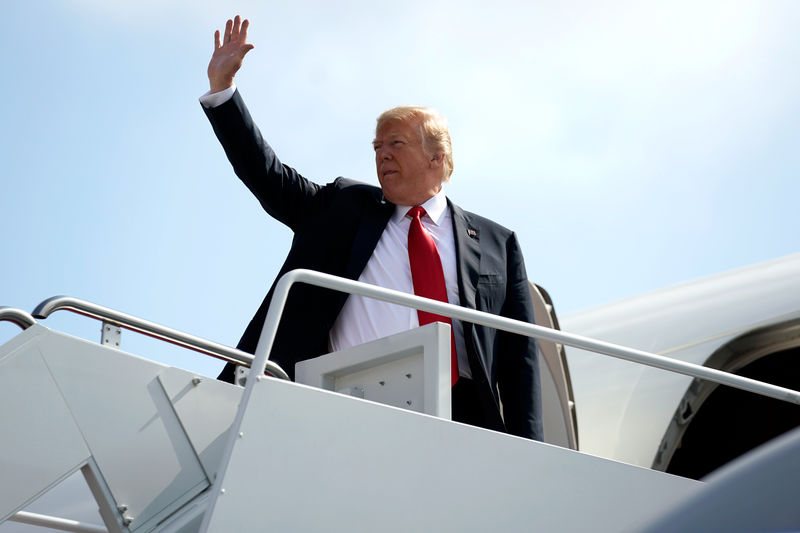By Vera Eckert, Oleg Vukmanovic and Sabina Zawadzki
FRANKFURT/LONDON (Reuters) - President Donald Trump's plan for "vast amounts" of U.S. liquefied natural gas (LNG) to be sold to the European Union after trade talks with its top representative faces a reality test.
After a meeting at the White House with European Commission President Jean-Claude Juncker on Wednesday, Trump said the EU would also buy more U.S. soybeans and work with Washington to cut other trade barriers to zero.
"European Union representatives told me that they would start buying soybeans from our great farmers immediately. Also, they will be buying vast amounts of LNG!," Trump wrote in a Tweet.
Juncker said the EU would build more terminals to handle America's LNG.
It appeared that a major LNG deal between the trading partners had been struck.
In reality, three-quarters of Europe's existing import facilities lie empty while demand for U.S. LNG on the continent remains limited.
The most lucrative markets for U.S. LNG are in South and Central America, India and the Far East, with Europe near the bottom of the pile given its relatively low prices and ample supplies of gas via pipelines from Russia and Norway.
(For a graphic on 'The most profitable export destinations for U.S. LNG' click https://reut.rs/2mNaXql)
Global gas price signals determine LNG trade flows, Royal Dutch Shell (LON:RDSa) Chief Executive Ben van Beurden said on Thursday.
"Will U.S. LNG reach Europe? Yes, but only if there is an arbitrage opportunity that makes sense," he said.
Politicians have little sway over this. The EU applies zero tariffs on U.S. LNG imports, so cutting them is not an option to boost trade in any future U.S.-EU talks.
Europe's declining domestic production of gas from the North Sea, Netherlands, Germany and Norway leaves a growing gap for Russia and potential LNG suppliers in the United States to exploit.
EU gas production will halve by 2040, the International Energy Agency says.
By then, 84 percent of gas will be imported against 71 percent 2016, it says, although it could be less if green energy expands faster and energy efficiency gains reduce the need for gas.
Trump told reporters on Wednesday that Europe would be a massive buyer of LNG to diversify its energy supply - "And we have plenty of it."
A number of European companies have already announced plans to buy LNG from a new wave of planned U.S. projects.
Portugal's Galp, Italy's Edison, Britain's BP (LON:BP) and Royal Dutch Shell are all lining up to lift LNG from Venture Global's planned Calcasieu Pass project in Louisiana.
But supply from these and other projects will not be ready for years and even then there is no guarantee it will come to Europe in meaningful quantities if more lucrative markets, such as China, emerge.
The benefit of lifting supplies from the U.S. is that a buyer can divert shipments to the highest bidder anywhere in the world without needing the approval of the seller.
Thomas Kusterer, chief financial officer for German utility EnBW (DE:EBKG), said on Thursday that he would consider purchasing U.S. LNG if it became cheaper than other sources.
Having more LNG options will help Europe avoid being overcharged by Russia, analysts say.
"LNG is a valuable option for Europe, it can create negotiating power," said Hanns Koenig of Berlin-based Aurora Energy Research.
